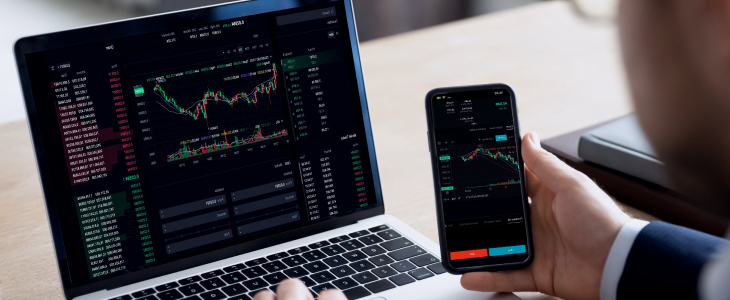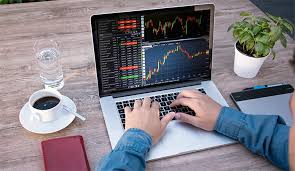
Mastering Forex Trading Times: A Complete Guide
In the dynamic world of foreign exchange (forex) trading, timing is everything. The way traders approach the forex market largely depends on understanding forex trading times Pakistan Brokers and their trading times. This article aims to shed light on the importance of forex trading times and provide valuable insights into how traders can leverage this knowledge to enhance their trading strategies.
Understanding Forex Trading Hours
The forex market is unique compared to other financial markets. It operates 24 hours a day, five days a week, allowing traders to engage in trading at almost any time. The market is divided into three major trading sessions: the Asian session, the European session, and the North American session. Understanding these sessions is crucial for traders to optimize their trading strategies.
The Asian Session
The Asian session begins at 11 PM GMT and closes at 8 AM GMT. It is often considered the quietest session, with lower volatility compared to the other sessions. The major financial centers in this session include Tokyo, Hong Kong, and Singapore. Traders focusing on currency pairs involving the Japanese yen (JPY) or the Australian dollar (AUD) might find this session particularly fruitful.
The European Session
The European session opens at 7 AM GMT and closes at 4 PM GMT. This session tends to witness the highest volatility and trading volume, as it overlaps with both the Asian and North American sessions. Major financial hubs such as London, Frankfurt, and Paris influence this session. Currency pairs like EUR/USD and GBP/USD are actively traded during this period, providing abundant opportunities for traders.
The North American Session
The North American session starts at 1 PM GMT and ends at 10 PM GMT. It coincides with the latter part of the European session, resulting in another spike in trading volume. Wall Street in New York is the primary financial center in this session, serving as the driving force behind significant market moves. Traders should pay particular attention to economic announcements during this time, as they can cause rapid price fluctuations.

Why Trading Times Matter
Understanding forex trading times is essential for several reasons:
- Volatility: Different trading sessions bring varying levels of market volatility. Learning when to trade can help in maximizing gains while minimizing risks.
- Liquidity: More liquidity in the market typically means better spreads, which are advantageous for traders. Knowing the peak trading hours allows traders to capitalize on this.
- Economic Releases: Key economic data releases often occur during specific trading hours, impacting currency values. Traders can align their strategies with the timing of these releases for improved entry and exit points.
Strategies to Optimize Trading Times
To make the most out of forex trading times, consider the following strategies:
1. Align with Market Sessions
As highlighted earlier, each trading session offers unique opportunities. Traders should align their trading strategies with the most suitable sessions for their currency pairs. For instance, those trading USD/JPY might prefer the Asian session, while traders favoring EUR/GBP may find the European session more profitable.
2. Analyze Economic Calendar
Keeping track of economic releases can provide insights into potential market movements. Use an economic calendar to know when key reports, such as GDP growth, employment figures, or central bank meetings, are being released. Trading just before or after these events can lead to significant price movements.
3. Use Technical Analysis

Incorporating technical analysis can help traders identify entry and exit points based on historical price movements. Analyzing charts during specific trading sessions can enable traders to spot patterns and trends, enhancing their potential for profits.
4. Set Realistic Goals
It’s vital to set realistic trading goals based on the volatility levels and market conditions during specific sessions. Trading solely to achieve a predetermined target may lead to taking unnecessary risks. Instead, focus on steady, incremental gains.
5. Maintain a Trading Journal
Tracking your trades, strategies, and market conditions in a journal is invaluable. It not only helps in reviewing performance but also allows traders to analyze which trading times yielded the best results, informing future strategies.
Common Mistakes to Avoid
As traders seek to navigate the forex market, they often make common mistakes related to trading times. Here are a few pitfalls to avoid:
- Ignoring Session Overlaps: Overlapping sessions, particularly the European and North American, experience increased volatility. Not taking advantage of these overlaps can mean missing out on profitable trades.
- Trading on Non-Trending Days: Some days may be less active than others, leading to low trading opportunities. Identifying and avoiding days with typically low volatility can prevent unnecessary losses.
- Overtrading: Trading too frequently in hopes of capitalizing on every opportunity can lead to burnout and losses. Stick to your strategy and avoid the urge to trade without a clear setup.
In Conclusion
Understanding forex trading times and how to leverage them can significantly enhance a trader’s success. By aligning strategies with trading sessions, analyzing economic calendars, using technical analysis, and maintaining a trading journal, traders can position themselves for informed decisions. Avoiding common mistakes while mastering the nuances of the market’s trading hours is essential for long-term profitability. As you embark on your forex trading journey, remember that knowledge is power, and timing is crucial.

